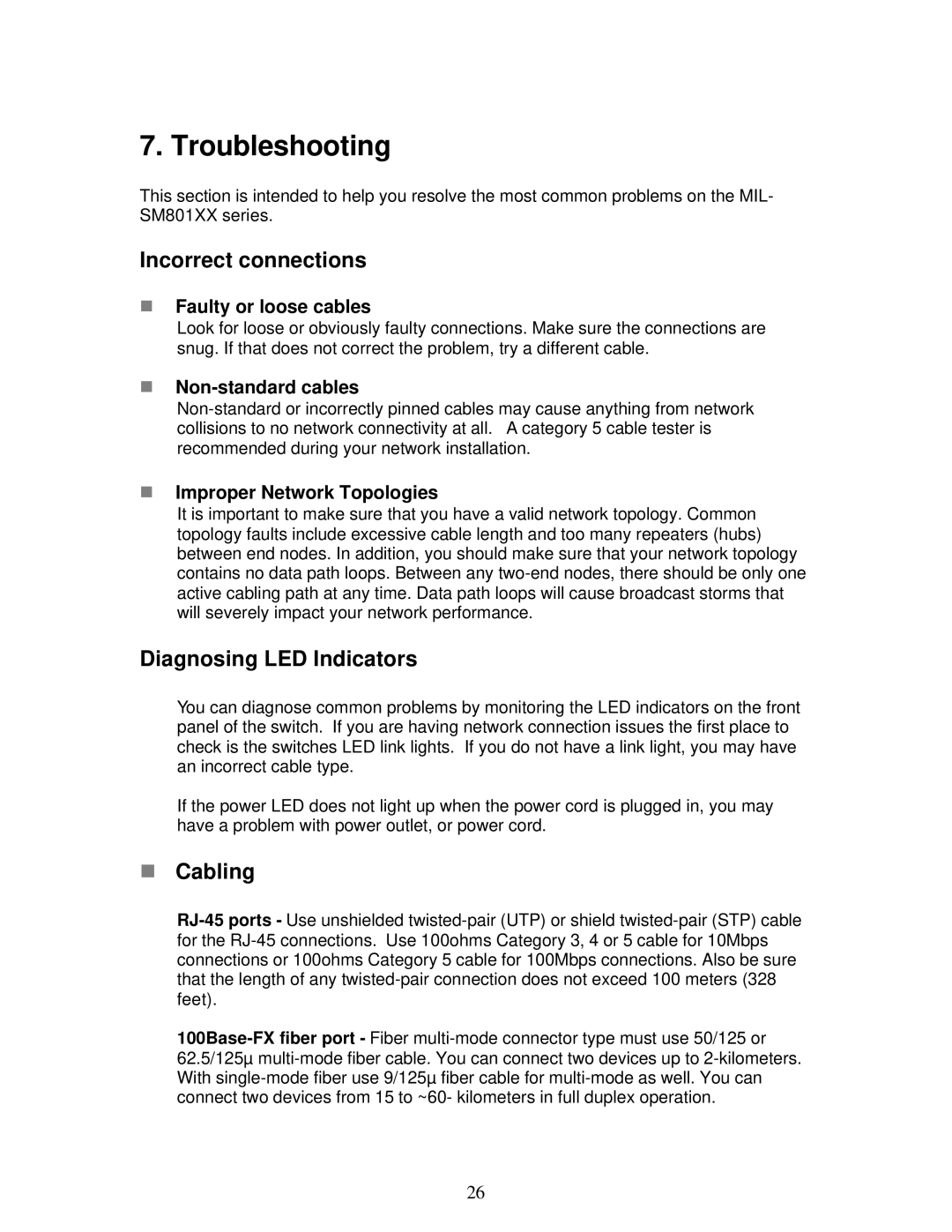7. Troubleshooting
This section is intended to help you resolve the most common problems on the MIL- SM801XX series.
Incorrect connections
nFaulty or loose cables
Look for loose or obviously faulty connections. Make sure the connections are snug. If that does not correct the problem, try a different cable.
nNon-standard cables
nImproper Network Topologies
It is important to make sure that you have a valid network topology. Common topology faults include excessive cable length and too many repeaters (hubs) between end nodes. In addition, you should make sure that your network topology contains no data path loops. Between any
Diagnosing LED Indicators
You can diagnose common problems by monitoring the LED indicators on the front panel of the switch. If you are having network connection issues the first place to check is the switches LED link lights. If you do not have a link light, you may have an incorrect cable type.
If the power LED does not light up when the power cord is plugged in, you may have a problem with power outlet, or power cord.
nCabling
26
